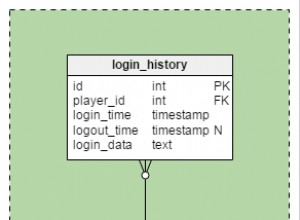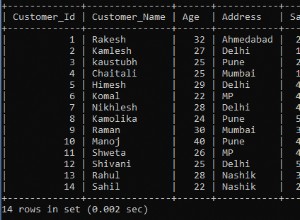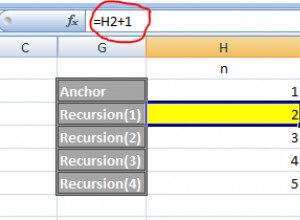Je suis arrivé à ceci, il ne devrait pas entrer dans des boucles infinies avec n'importe quel type de données :
--create temp table edges ("from" text, "to" text);
--insert into edges values ('initial_node', 'a'), ('a', 'b'), ('a', 'c'), ('c', 'd');
with recursive graph(points) as (
select array(select distinct "to" from edges where "from" = 'initial_node')
union all
select g.points || e1.p || e2.p
from graph g
left join lateral (
select array(
select distinct "to"
from edges
where "from" =any(g.points) and "to" <>all(g.points) and "to" <> 'initial_node') AS p) e1 on (true)
left join lateral (
select array(
select distinct "from"
from edges
where "to" =any(g.points) and "from" <>all(g.points) and "from" <> 'initial_node') AS p) e2 on (true)
where e1.p <> '{}' OR e2.p <> '{}'
)
select distinct unnest(points)
from graph
order by 1
Les requêtes récursives sont très limitantes en termes de ce qui peut être sélectionné, et comme elles ne permettent pas d'utiliser les résultats récursifs à l'intérieur d'une sous-sélection, on ne peut pas utiliser NOT IN (select * from recursive where...). Stocker les résultats dans un tableau, utiliser LEFT JOIN LATERAL et utiliser =ANY() et <>ALL() a résolu cette énigme.




